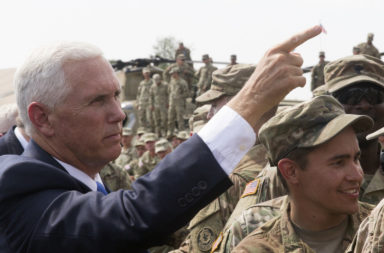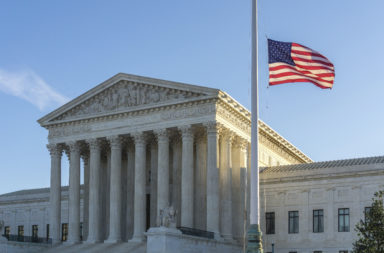In this Presidential Primary season, nothing is guaranteed.
Already, we know that it’s a mathematical impossibility for Kasich to win an outright majority. Why he’s sticking around is a question on many voters’ minds. But whether or not he stays in the race, the real question seems to be: what would it take to stop Donald Trump?
In the race to 1,237 delegates, he’s already well ahead. At last count, Trump led by almost 300 delegates, and he’s looking likely to seize the plurality of what remains.
Even if things suddenly turn against the firebrand candidate, current delegate math indicates that they would need to do so in such a fashion that Cruz would seize a total of 86% of the delegates to remain, with Kasich dropping out in the near future, leading his supporters to rally behind the only “non-Trump” candidate.
This path seems harder than the Donald’s. Requiring only 55% of the remaining 899 delegates, the only thing looking to stand in Trump’s way is the complicated manner in which a number of the states still to come award their delegates.
While some have been winner take all and others proportionately allocated, there are also those with a number of different hybrid arrangements, making the delegate math almost impossible to compute in advance. A few major states to follow will require the victor to pass 50% of the total vote before being allocated their share of the delegates. This could mean that even if Trump wins more than 50% of the votes in the states that follow, he might still end up falling short of that magic 1,237.
And it’s also why as we draw closer to the convention in Cleveland, we may indeed observe an absence of a clear winner. So despite the demographic advantage that Trump possesses in the states to follow, pundits still remain unsure how things are likely to play out in the proceeding months.
Regardless, it looks like those who were eagerly awaiting a quick resolution to this race are going to be kept waiting. Unfortunately many states still have until June 7 before going to the polls; most notably among these is California with 172 delegates that could indeed be the final determinant of the nominee this primary season.
However, before California arrives, all eyes will be turning towards Wisconsin where on April 5, with Republicans and non-Republicans alike being permitted to vote, Cruz is expected to face an uphill battle. And as the rural and Western states of Nebraska, Montana and South Dakota follow, he’ll be needing to maintain a near perfect record across the region in order to ensure his 86% required victory rate doesn’t grow.
After this, we’ll then move towards the northeastern states where Trump will be hoping to maintain his sizeable majority, beginning with his home state of New York.
Kasich too, will be out to prove that he can win the moderates, looking towards the suburban regions in the state to stop the momentum already building for the current frontrunner. Unless he can do so, Trump is certain to make a relative clean sweep of the state’s 95 delegates. Achieving this would all but seal his victory, as he steamrolls ahead to Connecticut, Delaware, Maryland, Pennsylvania and Rhode Island. Then moving to the winner take all states of New Jersey and California, the game may indeed be over.
If this wasn’t complicated enough already, there are still the unpledged delegates to account for. Not only do Colorado, Wyoming and West Virginia elect delegates who themselves decide upon the candidate, but this too will be the case for Pennsylvania where the winner is still far from decided. And this is before the roughly 200 delegates assigned to candidates no longer in the race become up for grabs.
This is all to say that there’s a great many things that can happen before Cleveland. The majority for Trump is great, and it looks to be growing. But unless he can get across the crucial thresholds required by some states to collect their delegates, we may indeed be headed to a brokered convention. Either way, one thing is clear: the next few months are likely to be anything but boring.




